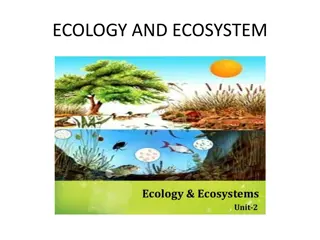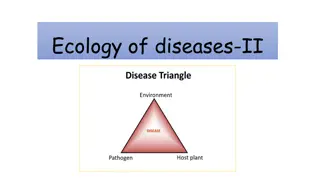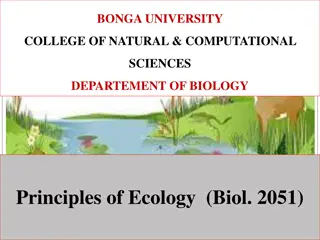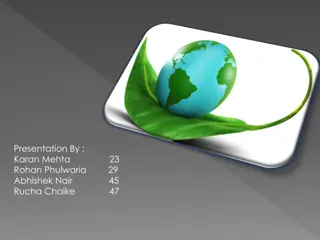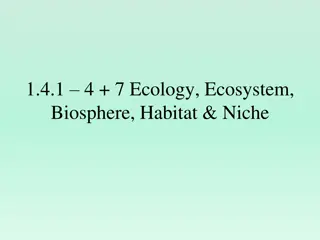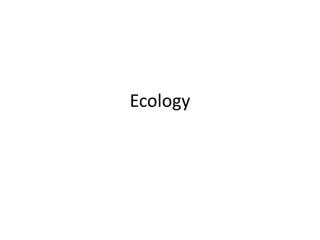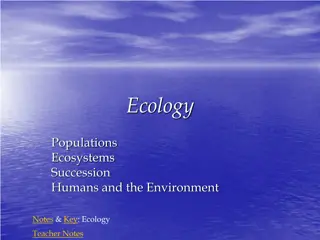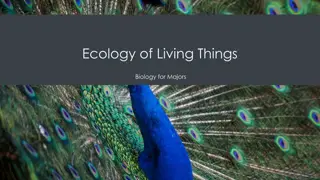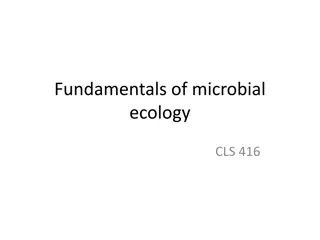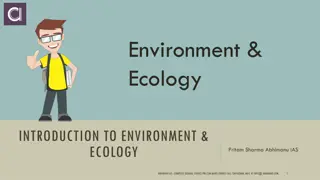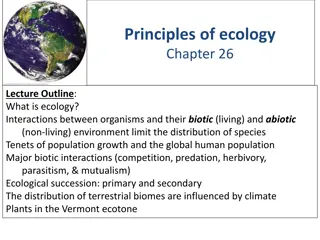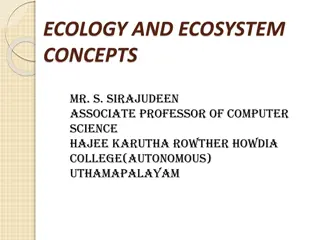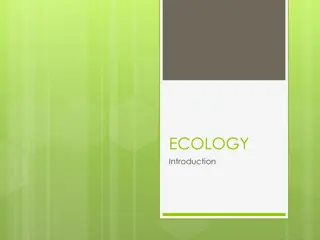Understanding Ecology: Key Concepts and Types Explained
Ecology, a vital branch of science, delves into the relationships between organisms and their environment. It encompasses biotic and abiotic factors, studying how living and non-living elements interact within ecosystems. Biotic components include living organisms like plants and animals, while abiotic components consist of non-living factors such as sunlight and soil. The study of ecology also involves examining Autecology, focusing on individual species, and Synecology, which explores the interactions within communities of different species. Dive into this enlightening world to grasp the intricate balance of nature.
Download Presentation

Please find below an Image/Link to download the presentation.
The content on the website is provided AS IS for your information and personal use only. It may not be sold, licensed, or shared on other websites without obtaining consent from the author. Download presentation by click this link. If you encounter any issues during the download, it is possible that the publisher has removed the file from their server.
E N D
Presentation Transcript
ECOLOGY By Mrs.P.SATHIYAVANI ASSISTANT PROFESSOR DEPARTMENT OF BOTANY BON SECOURS COLLEGE FOR WOMEN, THANJAVUR
What is Ecology? What is Ecology? Ecology is a branch of science including human science, population, community, ecosystem, and biosphere Ecology is the study of organisms, environment and how the organisms interact with each other and their environment.
Biotic and Abiotic Factors Biotic and Abiotic Factors The main aim of ecology is to understand the distribution of biotic and abiotic factors of living things in the environment. The biotic and abiotic factors include the living and non-living factors and their interaction with the environment.
Biotic Components Biotic Components Biotic components are living factors of an ecosystem. A few examples of biotic components include bacteria, animals, birds, fungi, plants, etc.
Abiotic Components Abiotic Components Abiotic components are non-living chemical and physical factors of an ecosystem. These components could be acquired from the atmosphere, lithosphere, and hydrosphere. A few examples of abiotic components include sunlight, soil, air, moisture minerals, and more.
TYPES OF ECOLOGY TYPES OF ECOLOGY There are two types of Ecology. Autecology Synecology Autecology is the study of individual organism or individual species. It is also known as population ecology. Autecology help us to understand the relationship between plants and environment Synecology is the study of group of organisms of different species which are associated together as a unit in form of a community. Synecology help us to understand the relationship between communities and environment





